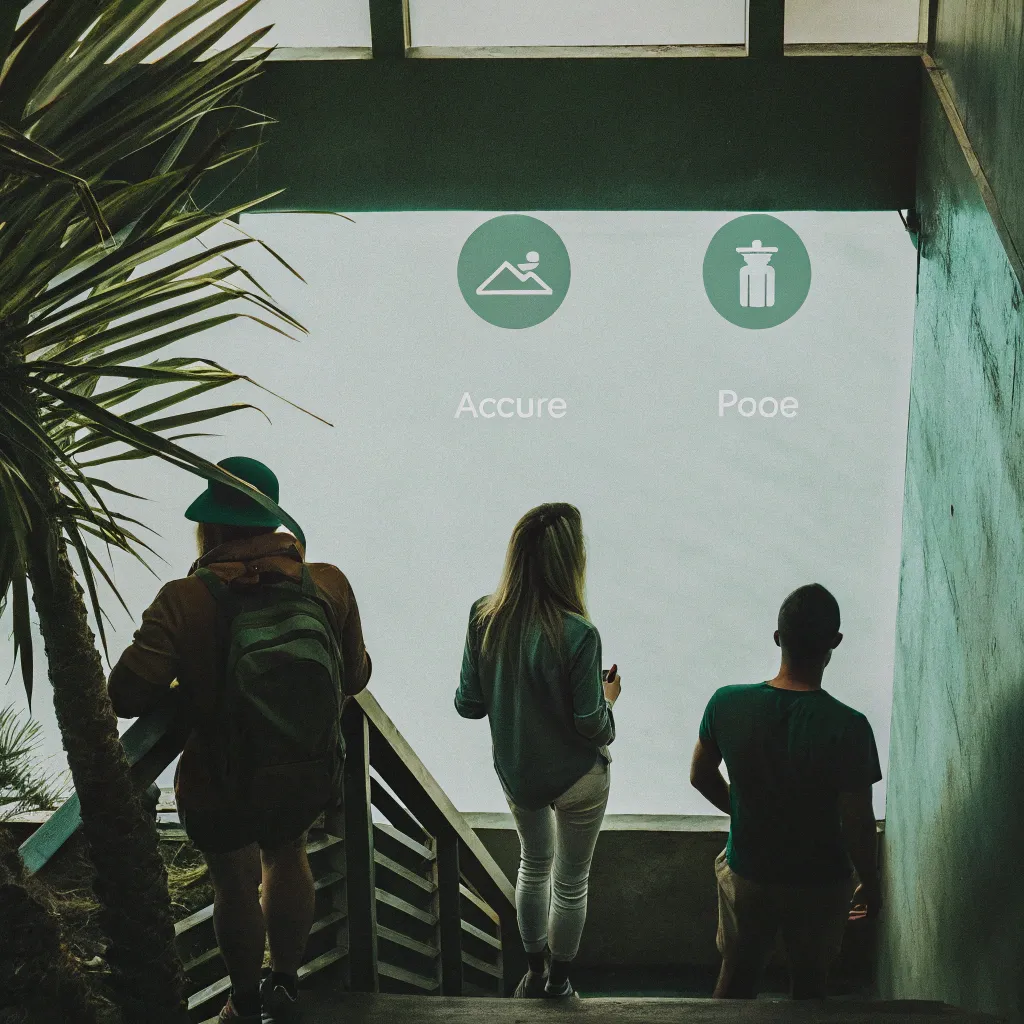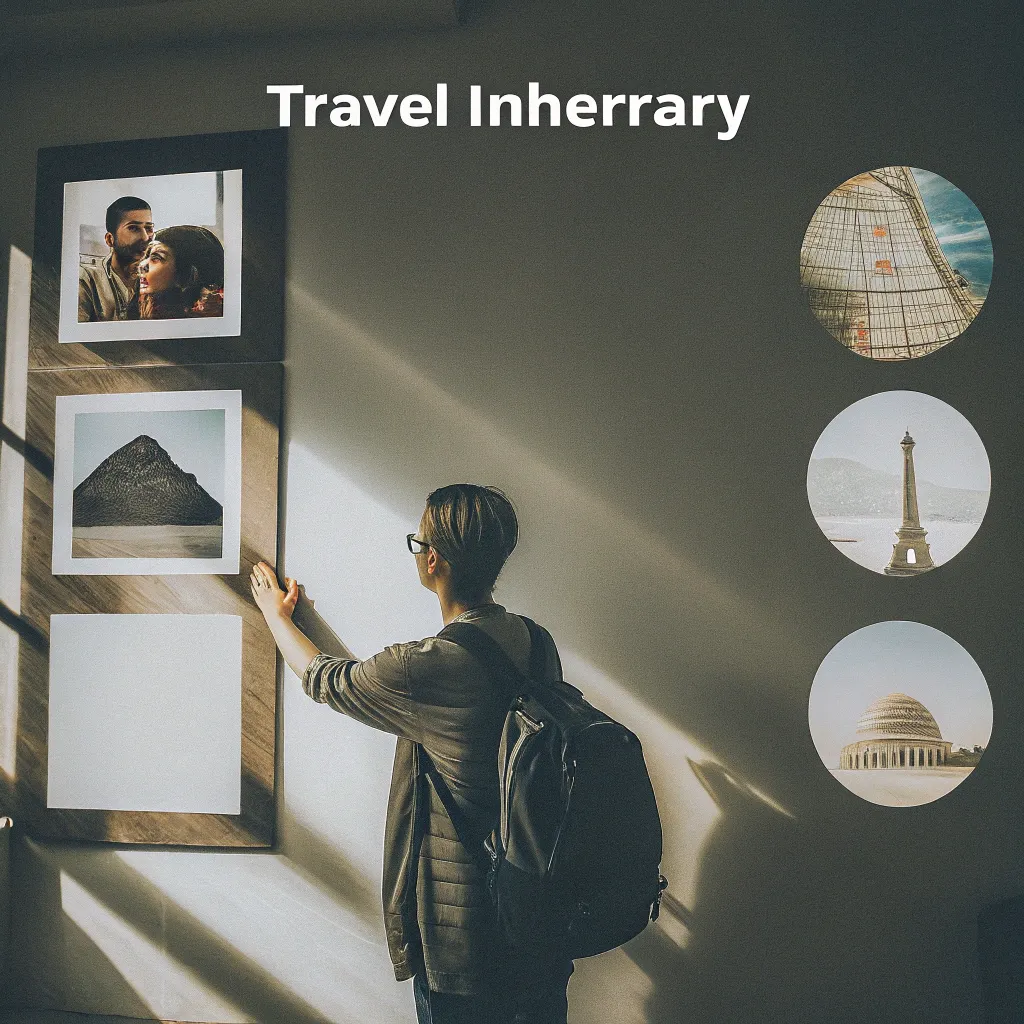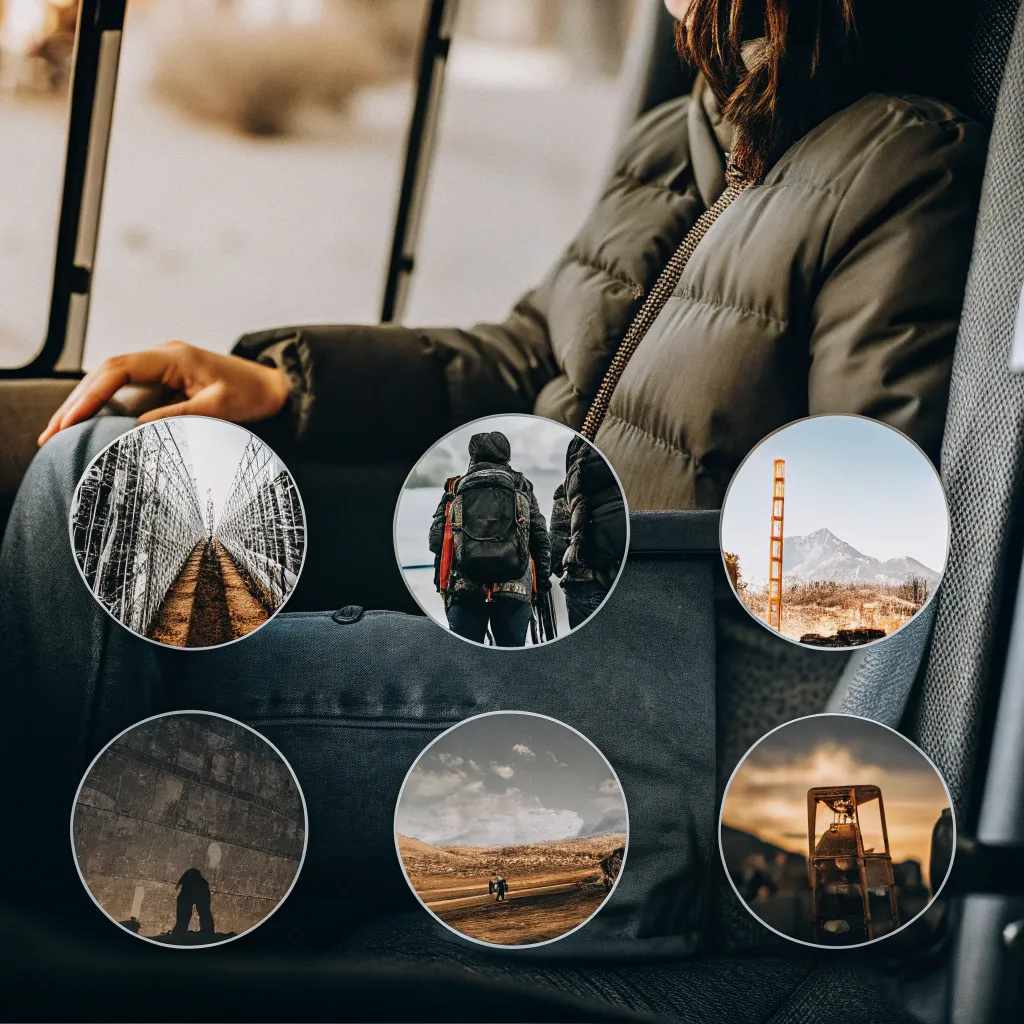Planning a trip can feel overwhelming—there's so much to see and do, but never enough time. The secret to a truly memorable journey isn't cramming in every tourist attraction, but crafting an itinerary that aligns with your personal travel style. Whether you're a history buff, foodie, adventure seeker, or just looking to relax, your travel preferences should guide your planning process.
Understanding Your Travel Style
Before diving into itinerary planning, take a moment to reflect on what makes travel enjoyable for you. Are you the type who rises at dawn to maximize sightseeing, or do you prefer leisurely mornings at cafés watching the world go by? Do museums energize you, or do you find yourself counting the minutes until you can leave?
Travel styles vary widely, and there's no right or wrong approach. Some common travel personalities include:
- Culture Enthusiasts: Drawn to museums, historical sites, and local traditions
- Adventure Seekers: Prioritize outdoor activities, physical challenges, and adrenaline rushes
- Relaxation Travelers: Focus on downtime, wellness, and peaceful experiences
- Culinary Explorers: Plan their days around food experiences and local cuisine
- Social Butterflies: Seek opportunities to meet locals and other travelers
- Luxury Travelers: Value comfort, premium experiences, and high-end accommodations
- Budget Backpackers: Stretch their money to maximize trip length and experiences

"Most travelers aren't just one type," says travel writer James Lohan, founder of Mr & Mrs Smith. "You might be an adventure seeker who also appreciates luxury accommodations, or a culture enthusiast who plans dinner reservations months in advance."
Many of us blend several styles, and your preferences might shift depending on the destination or who you're traveling with. The key is recognizing your priorities and planning accordingly.
How to Identify Your Travel Style
If you're unsure about your travel preferences, consider these questions:
- What were the highlights of your previous trips?
- What stories do you find yourself telling others after returning home?
- When browsing travel content, which activities or images capture your attention?
- How do you feel about structured versus unstructured time?
- What's your ideal pace—slow and deep or quick and varied?
Travel blogger Monica Francis notes, "Your travel style isn't fixed—it evolves as you do. My first backpacking trips were all about seeing as much as possible, but now I prefer to rent an apartment and live like a local for weeks at a time."

Building Blocks of a Perfect Itinerary
Once you understand your travel style, you can create an itinerary framework that supports your preferences. Here are the essential components to consider:
Pace and Structure
The rhythm of your trip significantly impacts your experience. Some travelers thrive with a packed schedule, while others need breathing room.
For high-energy travelers, a day might include:
- Morning: Cultural site or museum (2-3 hours)
- Lunch: Local restaurant experience (1-2 hours)
- Afternoon: Guided tour or second attraction (2-3 hours)
- Evening: Dinner and nightlife or entertainment
For those preferring a relaxed pace:
- Morning: Leisurely breakfast and neighborhood stroll
- Mid-day: One main activity or attraction
- Afternoon: Free time for shopping, café sitting, or spontaneous exploration
- Evening: Dinner without rushing to another activity
Maeve O'Sullivan, who designs custom Portugal itineraries through her company Soi55 Lifestyle, suggests, "Always build in buffer time. Even the most energetic travelers need moments to process experiences, and transportation often takes longer than expected."
Balancing Must-Sees with Personal Interests
Every destination has its iconic attractions, but that doesn't mean you need to see them all. Consider which align with your interests.
If you're heading to Istanbul, for example, the Blue Mosque and Hagia Sophia are undeniable highlights. But as travel blogger Earl Baron of Wandering Earl points out, "Beyond the major sites, Istanbul offers completely different experiences depending on your travel style. Some travelers might prefer exploring the Asian side's hip neighborhoods, while others might want to focus on the city's incredible food scene or hammam experiences."
Create three lists:
- Non-negotiable attractions (the ones you'd regret missing)
- Interest-aligned activities (those matching your travel style)
- Backup options (for unexpected schedule changes or weather issues)
Then build your daily plans around your priorities, not what guidebooks dictate as "must-sees."
Factoring in Logistics and Geography
A common planning mistake is ignoring geography, leading to wasted time crisscrossing cities or regions. Group activities by neighborhood or area to maximize efficiency.
For example, when planning a Vermont fall foliage trip, Monica Francis recommends, "Take Route 100 up through central Vermont, which connects many charming towns while offering spectacular views. Planning your route strategically means less driving and more enjoying."
Consider these logistics when planning:
- Transportation options and times between locations
- Opening hours and closed days (many museums close one day per week)
- Local meal times (which vary significantly by country)
- Seasonal factors affecting crowds or access
Crafting Itineraries for Different Travel Styles
Let's explore how different travel styles might approach the same destination:
The Culture Enthusiast in Lisbon
Day 1: Historical Introduction
- Morning: São Jorge Castle for views and history
- Lunch: Traditional Portuguese meal in Alfama
- Afternoon: Guided walking tour of Alfama's winding streets
- Evening: Fado performance with dinner
Day 2: Cultural Immersion
- Morning: Jerónimos Monastery and Belém Tower
- Midday: Sample pastéis de nata at Pastéis de Belém
- Afternoon: National Tile Museum
- Evening: Contemporary Portuguese dining in Chiado
Day 3: Art and Architecture
- Morning: Gulbenkian Museum
- Lunch: LX Factory creative district
- Afternoon: MAAT (Museum of Art, Architecture and Technology)
- Evening: Sunset drinks at a rooftop bar in Bairro Alto
The Adventure Seeker in Colombia
As Indie Traveller notes in their Colombia guide, "My travel style is usually to go overland, but the convenience and low cost of domestic flights in Colombia make them very tempting."
Week 1: Caribbean Coast
- Days 1-2: Cartagena (historic exploration, boat trip to Rosario Islands)
- Days 3-4: Santa Marta (base for Tayrona National Park hiking)
- Days 5-7: Lost City Trek (challenging multi-day hike to ancient ruins)
Week 2: Andean Region
- Days 8-9: Medellín (paragliding, mountain biking in surrounding hills)
- Days 10-11: Coffee Region (adventure activities like zip-lining, coffee farm tours)
- Days 12-14: Salento and Cocora Valley (hiking among world's tallest palm trees)
The Relaxation Traveler in Istanbul
Based on Wandering Earl's recommendations for Istanbul:
Day 1: Gentle Introduction
- Late morning: Breakfast at a waterfront café in Karaköy
- Afternoon: Bosphorus cruise (sitting, watching the city unfold)
- Evening: Dinner with a view at a rooftop restaurant
Day 2: Cultural Immersion at Your Own Pace
- Morning: Hagia Sophia (arriving before crowds)
- Lunch: Relaxed meal near Sultanahmet
- Afternoon: Turkish bath experience
- Evening: Sunset tea at a café overlooking the Golden Horn
Day 3: Local Living
- Morning: Visit a local market with no agenda
- Afternoon: Coffee and people-watching in hip Cihangir neighborhood
- Evening: Dinner cruise on the Bosphorus
How to Create a Balanced Itinerary
The 3-2-1 Rule
Many seasoned travelers follow what I call the "3-2-1 Rule" for balanced daily planning:
- 3 hours of active sightseeing or structured activities
- 2 hours for meals and relaxation
- 1 special experience that aligns with your travel style
This formula provides structure while avoiding exhaustion—especially important for longer trips.
Building in Flexibility
No matter how carefully you plan, some of the best travel moments happen spontaneously. Travel writer Pico Iyer once noted, "The best trips, like the best love affairs, never really end."
Reserve at least 20% of your time for unexpected discoveries. This might mean:
- Leaving one day entirely unplanned in a week-long trip
- Scheduling only one major activity per day, allowing the rest to unfold
- Creating morning plans but keeping afternoons flexible
When to Break Your Own Rules
Sometimes the destination should influence your travel style rather than the other way around. In Venice during high season, early mornings might be essential regardless of whether you're a morning person. In Spain, embracing late dinners allows you to experience authentic local culture.
Travel writer Rick Steves suggests, "Be a cultural chameleon. Adapt to the local rhythm even if it contradicts your usual preferences."
What About Traveling with Mixed Styles?
Traveling with companions who have different preferences presents unique challenges. Here are strategies for mixed-style itineraries:
The Split Day Approach
Divide each day into segments where different travelers take the lead:
- Morning: Culture enthusiast plans museum visits
- Afternoon: Adventure seeker arranges active experiences
- Evening: Foodie selects dining experiences
The Alternating Day Method
Each traveler gets complete control over different days:
- Day 1: Partner A's preferences
- Day 2: Partner B's preferences
- Day 3: Compromise day with shared interests
The Core-Plus-Optional Strategy
Plan core activities everyone participates in, plus optional add-ons:
- Core: Afternoon walking tour of historic district
- Optional: Morning cooking class (for culinary enthusiasts)
- Optional: Evening food tour (for foodies)
As Maeve O'Sullivan of Soi55 Lifestyle explains when creating personalized Portugal itineraries, "I'll build a fully personalised itinerary for you based on your travel style and interests, but I always identify which experiences are essential versus which are optional. This gives travelers flexibility while ensuring they don't miss what's truly special."
Common Itinerary Mistakes to Avoid
Overscheduling
The most common planning error is trying to do too much. Remember that travel involves unpredictability—transportation delays, unexpected weather, or simply discovering a place you want to linger longer.
"I always tell clients to plan one major activity per day, plus perhaps one minor one," says travel planner Sarah Johnson. "Everything beyond that is a bonus, not an expectation."
Ignoring Transit Time
Google Maps might say it's a 20-minute walk between attractions, but that doesn't account for getting lost, stopping to take photos, or pausing to watch an interesting street performer.
A good rule: Double the estimated transit time between activities, especially in unfamiliar locations.
Forgetting Your "Why"
It's easy to get caught up in checking off famous sites without remembering why you wanted to visit in the first place. If you're a nature lover at heart, don't spend your entire Paris trip in museums just because you feel you should.
Neglecting Downtime
Even the most energetic travelers need rest. Schedule intentional breaks—whether that's a midday hotel return, a long café stop, or simply sitting in a park watching local life unfold.
How to Adjust Your Itinerary on the Go
Even the most carefully crafted plans sometimes need adjustment. Here's how to adapt gracefully:
The Morning Check-In
Start each day with a brief assessment:
- How is everyone's energy level?
- What's the weather doing?
- Any local recommendations to consider?
Based on these factors, you might decide to swap activities or adjust timing.
The Priority Principle
When time gets tight, focus on your pre-identified priorities. Having clarity about what matters most makes it easier to cut or reschedule lower-priority activities.
The Local Expert Advantage
Local recommendations often lead to the most memorable experiences. Hotel concierges, tour guides, and even restaurant servers can provide insights that transform your itinerary.
As one traveler recounted from her Vermont fall trip, "Our innkeeper suggested a small detour to a covered bridge that wasn't in any of our guides. It ended up being the most photogenic spot of our entire trip, with perfect foliage reflections in the river below."
What's Your Perfect Itinerary?
Creating the perfect travel itinerary isn't about following someone else's ideal schedule—it's about honoring your preferences, interests, and energy levels. The best souvenirs are memories of experiences that resonated with you personally, not checks on a standardized tourist checklist.
Whether you're planning a weekend getaway or a month-long adventure, start with self-awareness about your travel style. Then build a framework that supports those preferences while remaining open to the serendipitous moments that often become the highlights of any journey.
Remember that the perfect itinerary isn't the one that covers the most ground or hits every famous landmark—it's the one that leaves you feeling fulfilled, enlightened, and eager to travel again.
What's your travel style, and how has it shaped your most memorable trips? The beauty of travel is that there's no single right way to experience the world—only your way.






